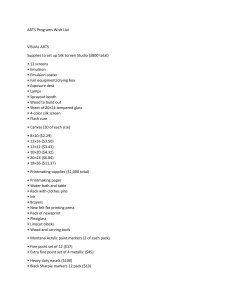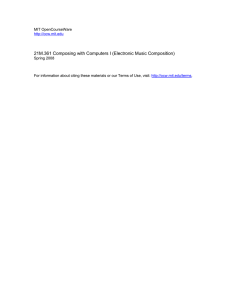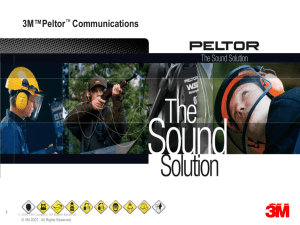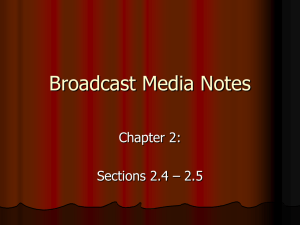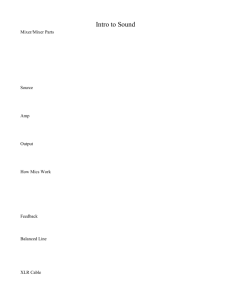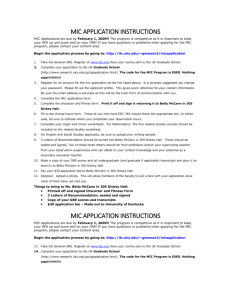Chapter 13 Main Points
advertisement
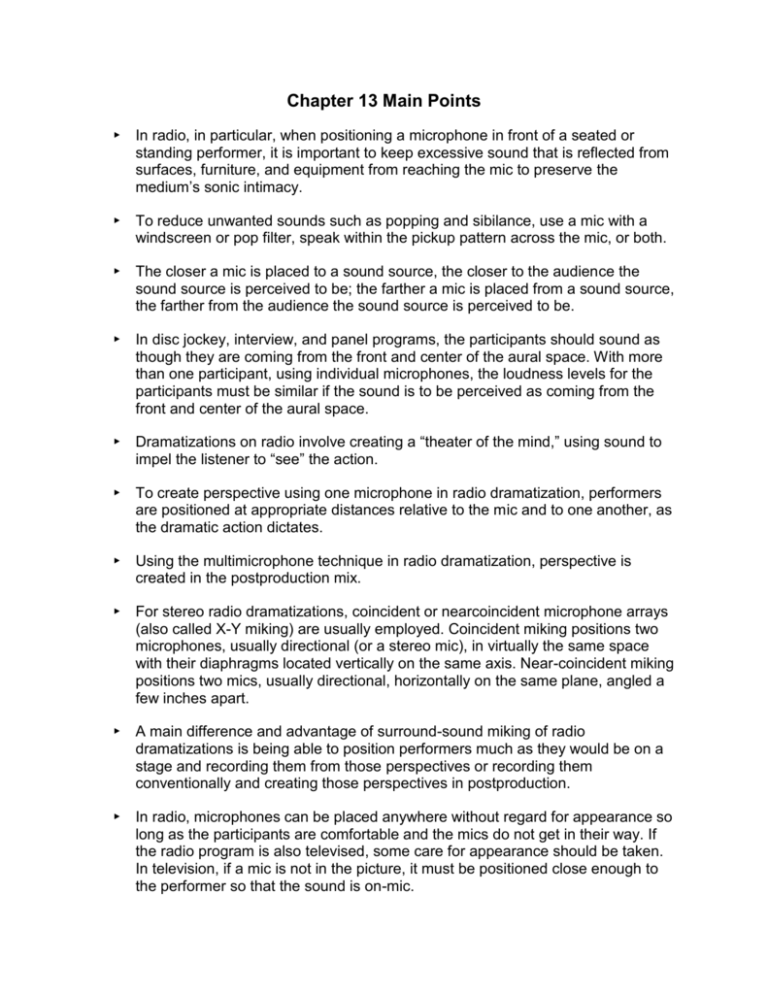
Chapter 13 Main Points ► In radio, in particular, when positioning a microphone in front of a seated or standing performer, it is important to keep excessive sound that is reflected from surfaces, furniture, and equipment from reaching the mic to preserve the medium’s sonic intimacy. ► To reduce unwanted sounds such as popping and sibilance, use a mic with a windscreen or pop filter, speak within the pickup pattern across the mic, or both. ► The closer a mic is placed to a sound source, the closer to the audience the sound source is perceived to be; the farther a mic is placed from a sound source, the farther from the audience the sound source is perceived to be. ► In disc jockey, interview, and panel programs, the participants should sound as though they are coming from the front and center of the aural space. With more than one participant, using individual microphones, the loudness levels for the participants must be similar if the sound is to be perceived as coming from the front and center of the aural space. ► Dramatizations on radio involve creating a “theater of the mind,” using sound to impel the listener to “see” the action. ► To create perspective using one microphone in radio dramatization, performers are positioned at appropriate distances relative to the mic and to one another, as the dramatic action dictates. ► Using the multimicrophone technique in radio dramatization, perspective is created in the postproduction mix. ► For stereo radio dramatizations, coincident or nearcoincident microphone arrays (also called X-Y miking) are usually employed. Coincident miking positions two microphones, usually directional (or a stereo mic), in virtually the same space with their diaphragms located vertically on the same axis. Near-coincident miking positions two mics, usually directional, horizontally on the same plane, angled a few inches apart. ► A main difference and advantage of surround-sound miking of radio dramatizations is being able to position performers much as they would be on a stage and recording them from those perspectives or recording them conventionally and creating those perspectives in postproduction. ► In radio, microphones can be placed anywhere without regard for appearance so long as the participants are comfortable and the mics do not get in their way. If the radio program is also televised, some care for appearance should be taken. In television, if a mic is not in the picture, it must be positioned close enough to the performer so that the sound is on-mic. ► Generally, for optimal sound pickup the recommended placement for a mini-mic is in the area of the performer’s sternum, about 6 to 8 inches below the chin. ► The earset mic is more obtrusive than the lavalier, but some producers prefer it: its voice pickup is more consistent than that of the lavalier; its mouth-to-mic distance can be adjusted to the speaker’s strength of delivery, and proper positioning out of the slip stream eliminates breath sounds and plosives; and because of the inverse square law, even with an omnidirectional pickup the close mouth-tomic distance usually provides decent rejection of surrounding noise. ► In television a desk mic is often used as a prop. If the desk mic is live, make sure that it does not block the performer’s face, interfere with the performer’s frontal working space, or pick up desk noises. ► The handheld mic allows the host to control audience questioning and mic-tosource distance and, like the desk mic, helps generate a closer psychological rapport with the audience. ► The boom microphone, like the mini-mic hidden under clothing, is used when mics must be out of the picture. Often one boom mic covers more than one performer. To provide adequate sound pickup, and to move the boom at the right time to the right place, the boom operator must anticipate when one performer is about to stop talking and another is about to start. ► Desk mics used for panel programs may be mounted on flexible gooseneck stands fixed to the desk. This facilitates adjusting each mic to the height of each panelist. ► Different techniques are used in controlling levels, leakage, and feedback of mic feeds from multiple sound sources: following the three-to-one rule, moderating limiting or compression, noise gating, or using an automatic microphone mixer. ► If an audience is present, it must be miked to achieve an overall sound blend and to prevent one voice or group of voices from dominating. ► Loudspeakers feeding program sound are positioned throughout the audience area. If they are mounted near the microphones picking up audience sound, the speakers are directional and situated to avoid feedback. ► Increasing audience laughter or applause, or both, by using recorded laughter or applause tracks adds to a program’s spontaneity and excitement. But these effects should not be so loud as to compete with the sound of the program participants. ► For stereo, audience sound is usually panned left-to-right with a lower level in the center. Or it is placed left and right of center, where the participants’ audio is placed. For surround sound, feeding audience mics to the rear channels provides a spacious effect to the overall program audio.

